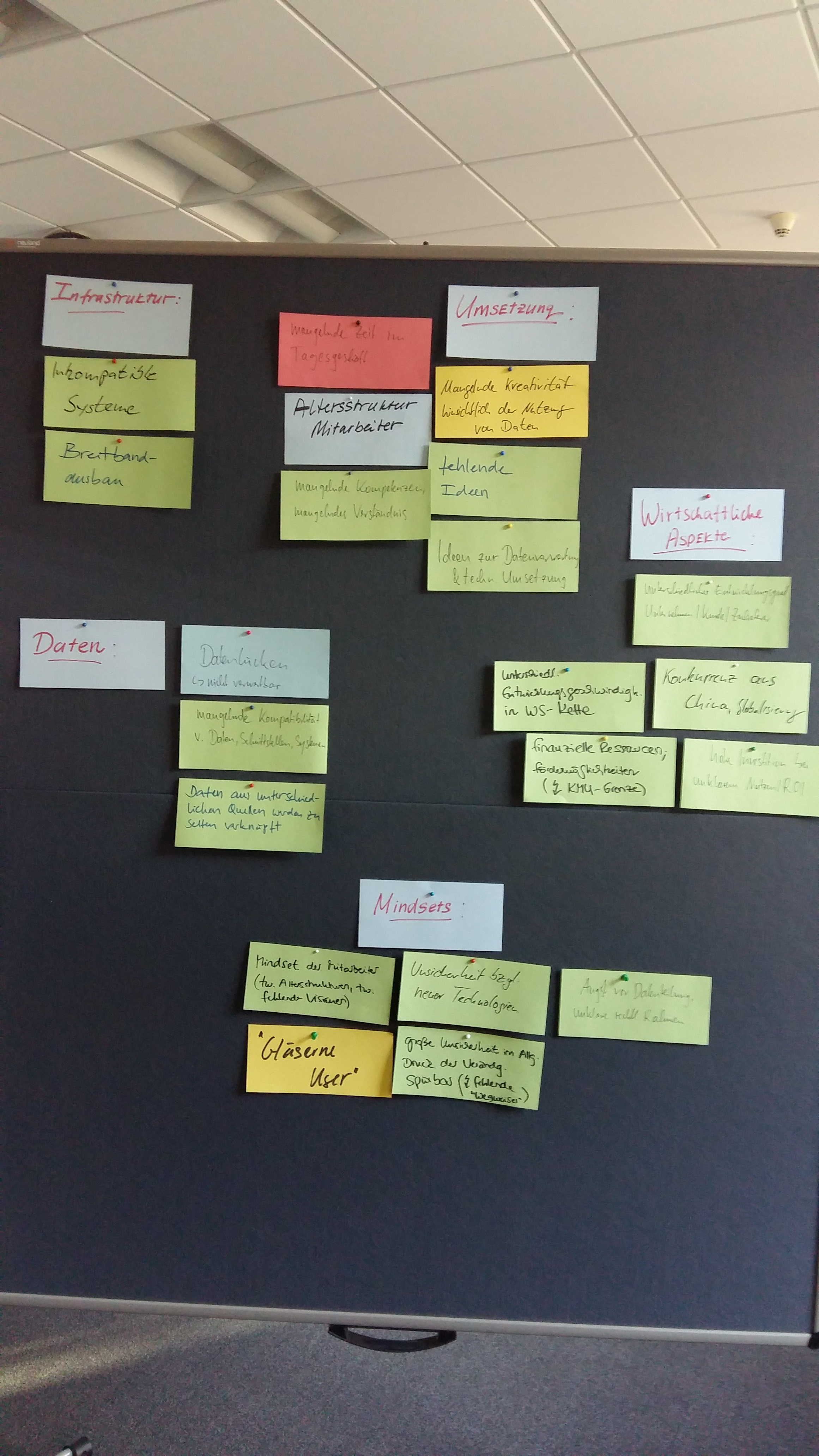So it is. Instead, there are colorful cards and pens on the table. Before we use them, Inga Döbel and Annamaria Riemer explain their working methods to us. They have already designed several future scenarios for areas as diverse as 3D printing and space travel. Inga Döbel explains how this works: “We collect information on our subject. This means comprehensive document analysis and data evaluation. In addition, we talk to people who deal with the topic or are affected by it. This means, for example, that we examine the structure of relevant markets as well as their growth and cost development. In addition, we examine the development of framework conditions and trends that can have a major impact on the field. From this, we develop key factors that form the basis for the various scenarios.”
Annamaria Riemer contributes an example: “Let's take the population figure. The development of the population depends primarily on the development of births and deaths. Spatial movements such as migration also play a role. However, it is difficult to make reliable statements about the long-term effects of demographic change, even if we disregard other possible influences such as wars, epidemics or environmental disasters. We cannot necessarily assume that birth rates and life expectancy will continue to be the same as we have seen in the past. It is even more difficult to estimate the future intensity and direction of immigration. All these factors influence our scenarios. In one scenario, we assume that the population will remain constant. In the next, we assume that it will shrink; in the third, that it will grow. This has different effects, for example, on the labor market.”
Are they predictions? Definitely not, they say. Rather, scenarios are thought experiments that outline possible “futures” by answering what-if questions. Although scenarios can be based on forecasts, some developments cannot be predicted precisely. The different scenarios help to better understand the current situation, to play through several possibilities for the future and to adjust to them. This results, for example, in strategic decisions in companies or recommendations for political action.
However, we don’t want to talk about future scenarios in general, but about future value creation from data. Specifically, we want to develop scenarios for this type of value creation in 2030. The status quo is important for the further development of ideas. That’s why we’re talking about the interviews we’ve already conducted with Saxony-based companies. What conclusions can be drawn from them? In order to process these, we finally need the cards. We write down our suggestions and then discuss our findings.




